The rise of online genealogy has made genealogical research easier in a variety of ways, but it also has its pitfalls.
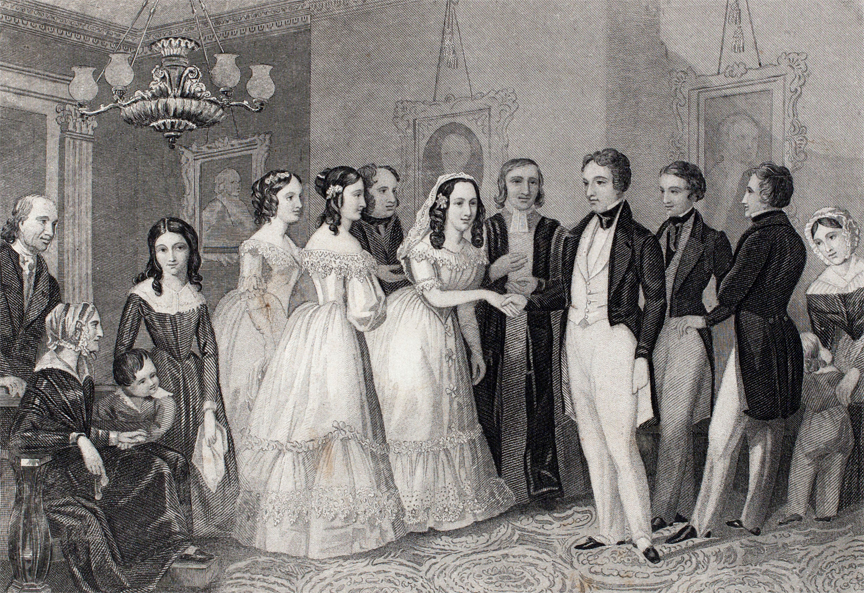 A puzzling genealogical query arrived by phone last week. A researcher found a marriage record reference in an index collected in the 1930s by the Daughters of the American Revolution (DAR). The index cited the name of the couple and a marriage year of 1832 in Washtenaw County, Michigan. As Michigan was a state with pretty reliable record keeping, I asked the patron which websites or collections they had consulted to find the original record.
A puzzling genealogical query arrived by phone last week. A researcher found a marriage record reference in an index collected in the 1930s by the Daughters of the American Revolution (DAR). The index cited the name of the couple and a marriage year of 1832 in Washtenaw County, Michigan. As Michigan was a state with pretty reliable record keeping, I asked the patron which websites or collections they had consulted to find the original record.
“That’s the problem,” my patron said over the phone. “The early Michigan marriages were indexed and are searchable on FamilySearch. Washtenaw County is included in the county marriage collection listing. I’ve searched the set over and over, and I can’t find anything.”
The Case of a Possible Missing Marriage
Fredrick Benham and Roseanna Smiley
Marriage Location: Washtenaw County, Michigan
Marriage Date: 1832 (no other information provided by DAR index)
Typically, knowing a record has been referenced in print resources and later made available online should ensure a quick way to track down an original (or digital version of an original) record. However, when searching an online record set, it is important not to fall into one of these genealogical pitfalls:
Does This Fall Under Territorial or State Record Keeping?
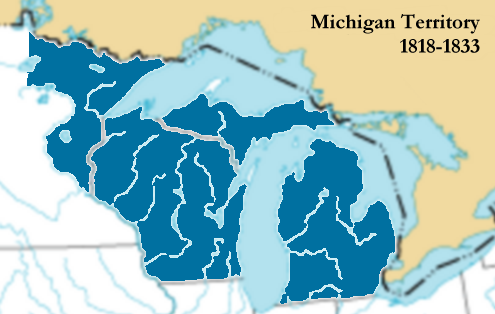 As people moved westward to the new United States territories, record-keeping practices were established to ensure necessary documentation was created and saved for future use. Let’s take a look at the Michigan territorial map during the year our 1832 marriage took place.
As people moved westward to the new United States territories, record-keeping practices were established to ensure necessary documentation was created and saved for future use. Let’s take a look at the Michigan territorial map during the year our 1832 marriage took place.
Yes, the Michigan Territory was expansive. Stretching from the mitten of the state through the upper peninsula, past Wisconsin and through the upper reaches of modern-day Minnesota. However, the size does not imply the place was an unorganized mess. The area had already been established on a neat and tidy Public Land Survey System, with a territorial capitol assigned, governmental standards set and local officials sworn in. Territorial laws provided structure for everything from alcohol sales to aiding individuals in need. It also established clear expectations for how marriages should be conducted, filed and reported.
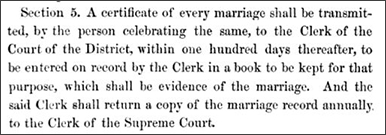
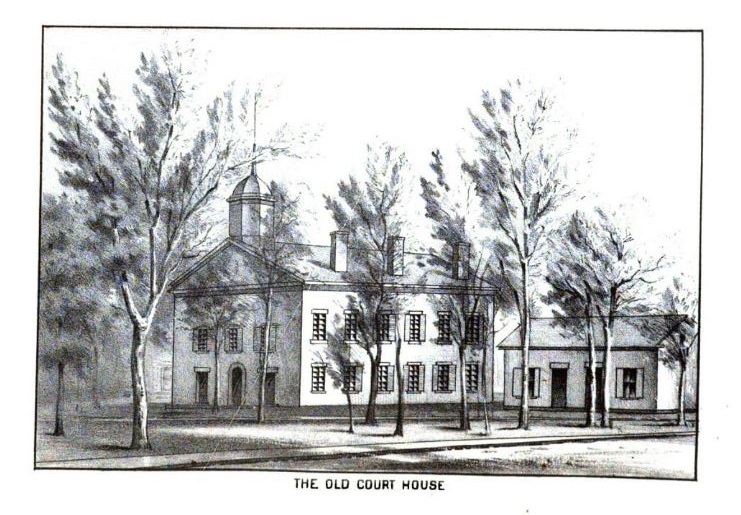
The first Washtenaw County Courthouse, which held records from 1833 to 1878.
Had the marriage been referenced as taking place in the ‘Michigan Territory’ as a vague reference point, our search may have required extensive research. Luckily for us, the territorial laws on the books entail all marriages, deeds, wills, probates and other administrative paperwork should be created and stored on a local level. We do not have to worry about searching for fragments or other references from burned state capitol records, as Detroit suffered from several devastating fires during its early years.
Does the Digitized Record Set Have Printed Index?
When an online search fails to yield results, check the digitized microfilm for an index area. This is usually at the beginning of the film. However, it can also be in a separate microfilm collection. It is not unusual to have certificates in one collection and the index in another, so check the FamilySearch catalog to review your options. For Frederick Benham and Rebecca Smiley, the index to marriages is included at the beginning of the marriage record microfilm. However, the record title states the index does not document marriages taking place between 1827 and 1833. As our marriage it taking place in 1832, it is possible the only index available was provided by the Daughters of the American Revolution. Still, it’s worth a look to see if these early marriages were possibly listed. After scrolling through the digitized microfilm index, we found our man!

The notation at the top of the index states the marriage is documented in Book O, on page 497. There is one additional marriage on the page for William A. Belgole, which should help provide support for the accuracy of the index. While browsing through the page, William Belgole’s marriage is exactly where the index indicates. Frederich Benham’s marriage, which had taken place the same year, was trickier to find.
Marriage in the Margin
As territorial marriages had a one-hundred-day reporting period, record keepers resorted to using the margins at the bottom, top or side of pages to ensure marriages were documented in their corresponding year. Earlier indexers were familiar with this practice and did their best to document multiple marriages which were squeezed into the margins. The county index, along with the ladies of the DAR, provided a correct reference. It appears the indexer and arbitrator working on the FamilySearch digital microfilm missed these marriages in the margins, thereby not including them in the searchable records. Mistakes happen, and as an indexer myself, some of these records are super hard to decipher. We can find Frederich Benham on the page, but Roseanna Smiley’s name and other marriages in this section have been obscured by another piece of paper. Taking a quick look in the index record for Roseanna Smiley, no 1832 records were indexed, only 1833 onward. It is possible the indexers were advised to change their strategy, as names early in the alphabet (A, B and C) include earlier dates of 1831-1832, but later surnames (M, N, S and T) did not. This is a good notation to include in your research log when conducting further searches in the record set. You may need to consult additional printed resources if the index included with the microfilm does not cover the years you need.
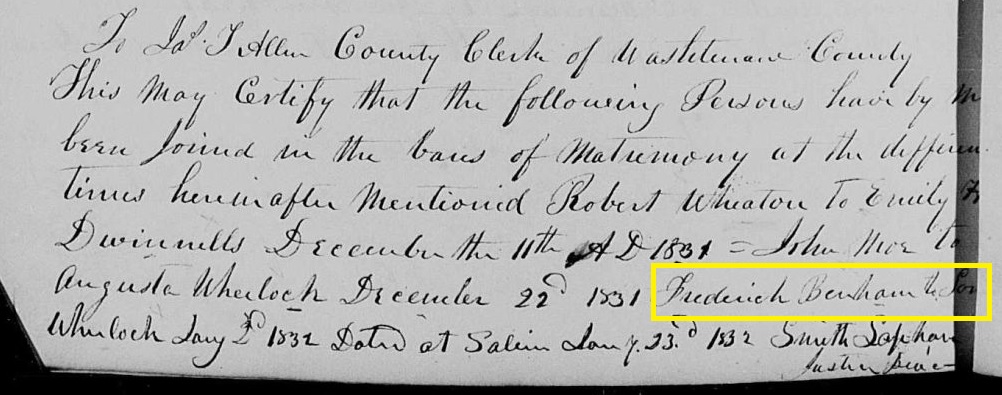
What Are Our Next Steps?
My patron needs this record for a lineage society application, so we found another copy of this marriage record at the Michigan History Center. Through the wonders of the internet, my patron may choose to request a copy of the page online or consult the record in person by making an appointment. Will this second copy include the information needed? Hopefully so. If not, we will need to consult the original page, which may require additional legwork. It is possible the page was ripped and hasn’t survived to the present day, but we won’t know until the necessary appointments and review of records have been made.
What Can We Take Away From This Case?
In summary, searchable records are great, but they are prone to mistakes. When finding an indexed marriage, look for source citations. Early print indexes collected by lineage, genealogical and historical societies may not include many details. However, read and record any details available. Consult additional indexes created by the governmental authority. These may or may not be included with the microfilmed records. Indexes may be inconsistent, so consult further indexes in other publications or records as needed. Due to delays in record keeping, marriages may be squeezed into the margins of the page. Be patient, and read everything on the page thoroughly. If the digitized record you need has missing information, consult the original. Add these details to your research log. Make all necessary appointments or requests in a timely fashion with the institution which houses the original record. Be persistent in your research, and ask for help from clerks, librarians, archivists and research groups as needed.
Where Can You Go to Sharpen Your Genealogy Research Skills?
The Fountaindale Public Library Genealogy Club meets twice a month and hosts knowledgeable speakers on a wide array of subjects. Our club meets virtually and in a hybrid format on select dates throughout the year. Thanks to the generosity of our speakers, recordings of our meetings are available for free for a limited time on our YouTube channel. You can find our full list of genealogy events on our calendar. If you need help with your genealogy research, book a virtual or in-person appointment by emailing ddudek@fountaindale.org or calling 630.685.4201.
See You At The Library!
Debra
